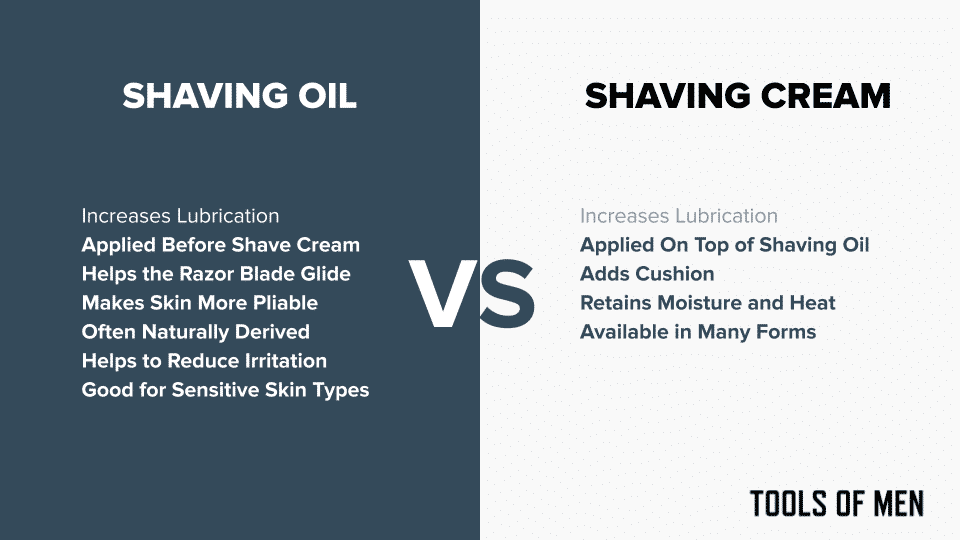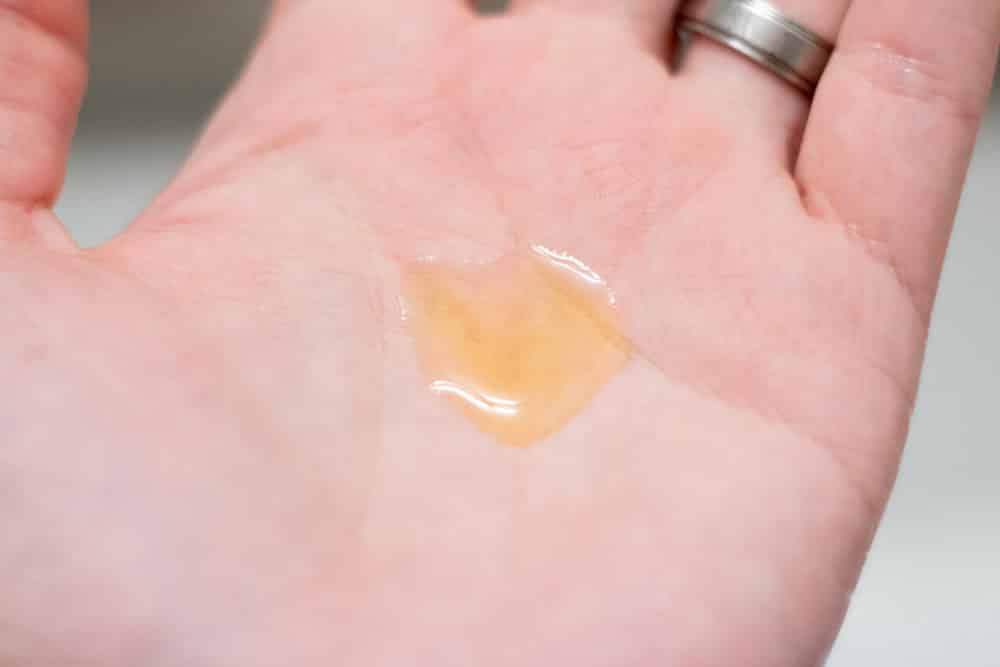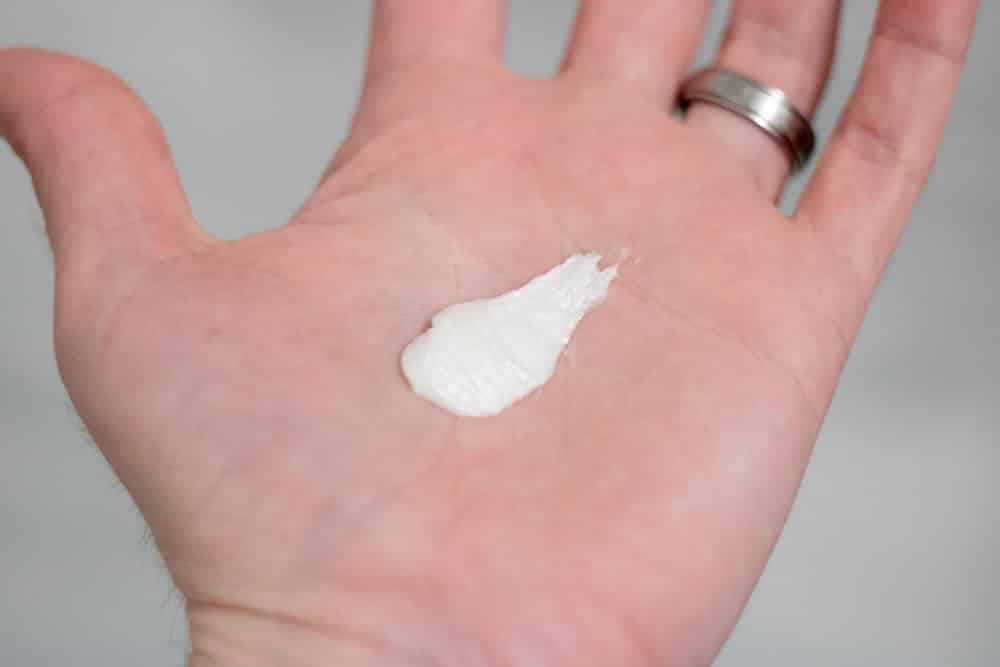Shaving oil and shaving cream are commonly confused – partially due to their name. The focus of this article is to help you understand just how different both of these grooming products are from one another.
Let’s see how:
Comparing Shaving Oil and Shaving Cream
Here is how shaving oil and shaving cream differ from one another:

Shaving Oil

Shaving oil, also known simply as a pre-shave oil, is intended to prep your hair prior to shaving. It can come in many different forms and compositions. The most popular type of shaving oil is one that is derived from natural ingredients. Other varieties include synthetic blends and thicker creams.
The primary purpose of shaving oil is to increase lubrication to your face prior to shaving. Applied underneath the shaving cream, a shaving oil helps to soften facial hair and increase skin pliability. This can be helpful for some men who commonly experience mild skin irritation while shaving.
You should not use shaving oil in lieu of shaving cream. Instead, it must be used together with shaving cream.
We go into further detail about pre-shave oil if you want to learn more.
Shaving Cream

Shaving cream, like shaving oil, adds lubrication to both your facial hair and skin in order to increase comfort while shaving. However, shaving cream is considerably thicker which helps to provide both cushion and insulation properties not found in shaving oil. These properties allow for better blade performance while also helping to retain both heat and moisture for the area that is to be shaved.
Shaving cream comes in many different forms including shave gels, soaps, latherless, and cream as discussed here.
Can You Use Both Shave Oil and Shave Cream?
Yes, both shaving oil and shaving cream are recommended to be used in combination with one another. If you want to understand how to use them properly, we recently published a guide demonstrating how to do just this.
Is Shaving Oil Just for Men with Sensitive Skin?
When it comes to evaluating grooming products, what can work well for one man doesn’t necessarily work well for another. The reason is due to the vast number of variables in the whole shaving routine. This can include facial hair prep, sharpness (or dullness) of the razor blade, technique, facial hair density, and of course, skin sensitivity.
Therefore, we exercise caution on saying exclusively that a shaving oil is just for men with sensitive skin – however, many may find it quite helpful. Even if you don’t have sensitive skin, a pre-shave oil can still elevate the shave experience.
Is Shaving Oil Simply Repackaged Beard Oil?
Naturally-derived shaving oil is nearly identical to beard oil. However, there are some subtle differences between the two. Most notably, shaving oil often relies on castor seed oil which has a thinner viscosity (68.69 viscosity index) when compared to the primary oils found in beard oil such as jojoba oil (257 viscosity index) – (source – page 6). A thinner oil helps to reduce clogging, especially for multi-blade cartridge razors.
Additionally, shaving oil is intended to only be applied for a short time while shaving and rinsed off thereafter, whereas beard oil is applied as a conditioning agent to reduce dryness and itchiness.
Lastly, shaving oils typically have a light scent or are unscented. Conversely, most beard oils are strongly scented through the inclusion of various essential oils.
Where Can You Use Shaving Oil and Shaving Cream?
You can apply both shaving oil and shaving cream anywhere on your body that is intended to be shaved. Shaving oil is designed to reduce irritation while shaving. However, if you are shaving sensitive areas of your body such as under your arms or groin, we do recommend that you use unscented shaving oil.
Will Shaving Oil Stop Razor Bumps?
In short, probably not. Razor bumps, also known simply as ingrown hairs, are prevalent in men with dense and curly beards. When the hair is cut too low (common with cartridge razors due to the hysteresis effect), the hair will grow inwards and cause a bump. Instead, you may want to consider using a single blade razor such as a safety razor.